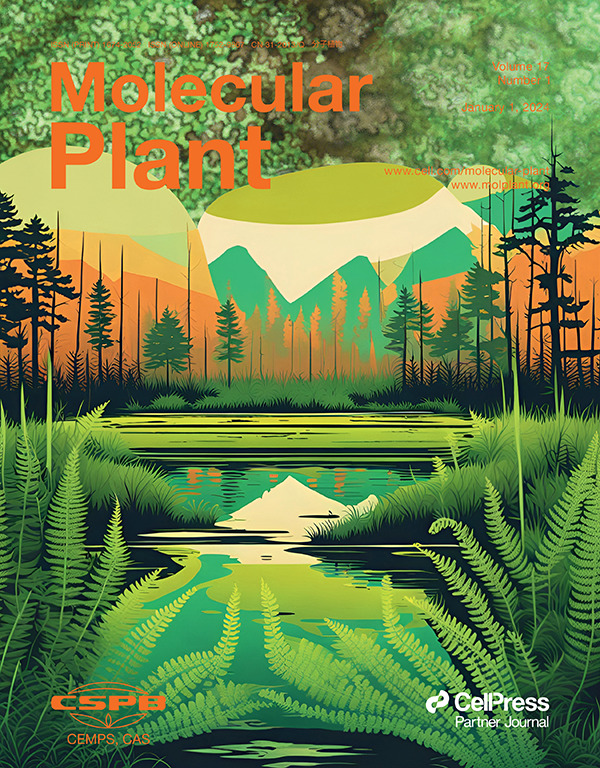通过培育和种植半矮秆玉米来重塑可持续的绿色革命
IF 24.1
1区 生物学
Q1 BIOCHEMISTRY & MOLECULAR BIOLOGY
引用次数: 0
摘要
农业绿色革命产生了在氮密集和高密度种植条件下提高小麦和水稻产量的半矮秆品种。然而,作为全球粮食安全基石的玉米却从未经历过类似的结构改进。在20世纪40年代至60年代,通过杂交育种已经实现了玉米产量的显著提高。然而,高密度种植需求的增长暴露了玉米面临的挑战,如倒伏敏感性和养分竞争,因此迫切需要更矮的杂交玉米品种。本文综述了近年来在玉米高度调控、结构优化和氮素利用效率方面的研究进展,为半矮秆玉米育种提供了可操作的目标。目前的生物技术突破使半矮秆玉米品种得以发展,这些品种增强了抗倒伏能力,同时减少了对肥料的依赖,从而克服了绿色革命品种的历史局限性。我们认为,半矮秆玉米具有通过提高抗灾能力、产量和可持续性来彻底改变玉米生产的潜力。本文章由计算机程序翻译,如有差异,请以英文原文为准。
Reinventing a Sustainable Green Revolution by Breeding and Planting Semi-dwarf Maize
The agricultural Green Revolution gave rise to semi-dwarf varieties that increased wheat and rice yields under nitrogen-intensive and high-density planting condition. However, maize, a cornerstone of global food security, never underwent an equivalent architectural improvement. During the 1940s–1960s, significant yield gains in maize had already been achieved via hybrid breeding. Nevertheless, the growing demand for high-density planting has exposed challenges in maize, such as lodging susceptibility and nutrient competition, consequently driving an urgent need for shorter hybrid maize varieties. Here, we summarize recent advances in maize height regulation, architectural optimization, and nitrogen use efficiency, which provide actionable targets for semi-dwarf maize breeding. Current biotechnology breakthroughs now enable the development of semi-dwarf maize varieties that enhance lodging resistance while reducing fertilizer dependency, thereby overcoming the historical limitations of Green Revolution varieties. We propose that semi-dwarf maize holds the potential to revolutionize maize production by enhancing resilience, yield, and sustainability.
求助全文
通过发布文献求助,成功后即可免费获取论文全文。
去求助
来源期刊

Molecular Plant
植物科学-生化与分子生物学
CiteScore
37.60
自引率
2.20%
发文量
1784
审稿时长
1 months
期刊介绍:
Molecular Plant is dedicated to serving the plant science community by publishing novel and exciting findings with high significance in plant biology. The journal focuses broadly on cellular biology, physiology, biochemistry, molecular biology, genetics, development, plant-microbe interaction, genomics, bioinformatics, and molecular evolution.
Molecular Plant publishes original research articles, reviews, Correspondence, and Spotlights on the most important developments in plant biology.
 求助内容:
求助内容: 应助结果提醒方式:
应助结果提醒方式:


